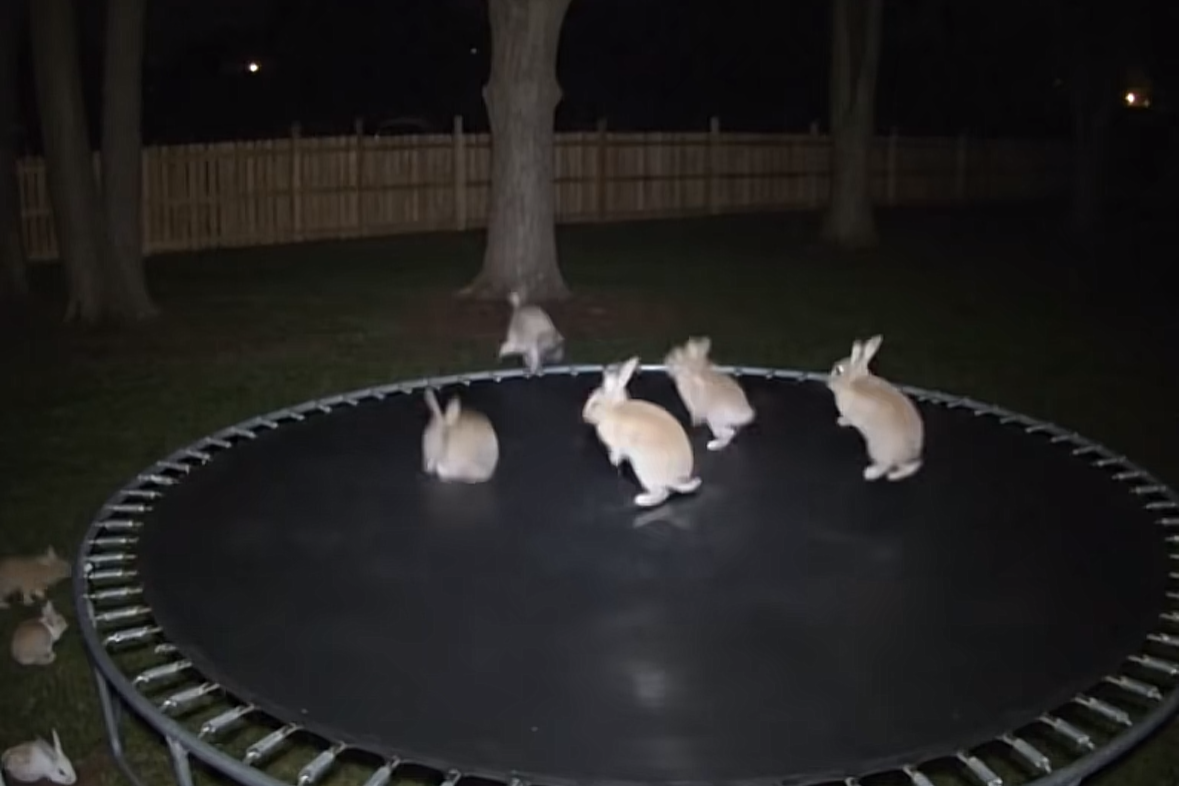
Have you ever seen a video that made you believe in a slightly more magical world? On Sunday, July 27, a TikTok user made everyone think that a family of bunnies hopped on a trampoline in the middle of the night. It’s a recipe for the perfect video: woodland creatures are so cute, and bunnies famously love to hop and jump. Except it was actually AI and the whole world felt like they got tricked — the original video has over 210 million views and has comments from every part of the app expressing their disappointment. “This is the first AI that has ever got me,” wrote one commenter with almost 700k likes. “Before it was object or cake, but now it’s real or AI,” wrote another, originally in Spanish, referencing the show Is It Cake?. For some viewers, it might’ve been the first time AI-generated content has really duped them. “Fell for an AI video of bunnies jumping on a trampoline. Even sent it in my family group chat. Had to touch some grass,” TikToker @Crys_Cut posted with a video of her touching said grass with over 3.3 million likes. So, why did it strike such a nerve for people to realize that this video was AI?
Let’s see the bunnies.
On July 27, user @Rachelthecatlovers posted the video captioned, “Just checked the home security cam and… I think we’ve got guest performers out back!” with hashtags tagging Ring, a home security camera system, making it seem like just a regular ol’ funny video of backyard shenanigans. Since posting, the video has gained over 201 million views with 23 million likes and 7 million shares just from the original video alone — not counting any other reuploads to different platforms or accounts.
Like many online, Nolan on X felt “deceived” and “saddened” when he realized that the video was fake. “I will be 100% honest I thought it was real and endearing,” he wrote, before adding in another post. “I sent it to my sister and everything. I feel like a 50 year old woman on Facebook.” Singer Oliver Richman made not one but two videos in a row, singing his heartbreak out about the AI bunnies. “If a bot can inhabit an unknowing rabbit, it might manufacture the way you made me feel,” Richman sang to 2.5 million TikTokers who saw his song and probably felt the same way.
What’s wrong with them?
The very short 8-second video has a tell-tale sign that it’s unfortunately not real. Several times, one bunny would run by another, and the bunny behind it would disappear. For example, at the very beginning of the video, on the bottom left side of the trampoline, it appears as if a two-headed bunny is absorbed into one as it turns to hop towards the middle. Another bunny starts bouncing towards the top and absorbs a second bunny. Also, when looking at the bigger picture of it all, if you saw bunnies jumping on your trampoline on your camera, wouldn’t you record a video that is way longer than just 8 seconds? I would need as much footage as possible.
How can you tell if a video is AI?
Bunnies aren’t the only victims. Bears, deers, dogs, ducks, even more bunnies have all been generated to jump on a trampoline. Jeremy Carrasco of ShowToolsAI, an account dedicated to teaching viewers how to spot AI, offers several methods to tell the difference between a cute animal video and an AI creation. He compared real animals, like videos of dogs jumping, to the AI videos — he points out that dogs and other four legged creatures can only get a few jumps in before stopping. Carrasco explained how a video of a coyote playing with (and not bouncing on) a trampoline started the trend, and with real videos, there’s sharpness of the objects in focus, a harsh lightning, and a choppiness in the footage. Compared to an AI-generated bear, Carrasco noted, “The movement is too smooth, there isn’t enough visual noise, the objects don’t move realistically at all, and this light would totally blow out the sensor and exposure.”
MIT’s Media Lab’s Detect Deepfakes research has a few tips on how to analyze a viral video that doesn’t have a fluffy friend involved. They suggest taking a closer look at facial features, like cheeks, foreheads, glasses, facial hair, or lip movements, noting throughout: “Do shadows appear in places that you would expect? DeepFakes may fail to fully represent the natural physics of a scene.” Northwestern University’s AI research team also breaks down AI detection into several categories: anatomical implausibilities (like extra fingers or limbs), stylistic artifacts (when images look plastic), functional implausibilities (text on screen doesn’t make sense), violations of physics (bear would break a trampoline because they’re too heavy), and sociocultural implausibilities (how long have trampolines and bunnies been around in the universe? Why hasn’t a bunny been caught hopping on one before?).
What do bunnies really look like on a trampoline?
There are real bunny videos everywhere for those with the eyes to see.
